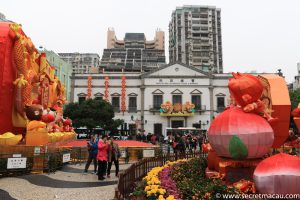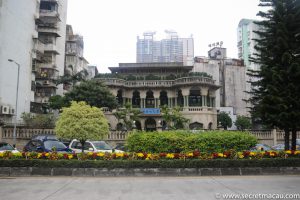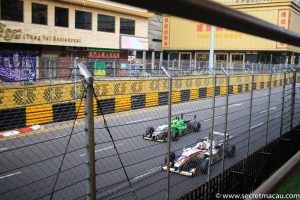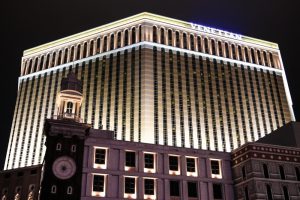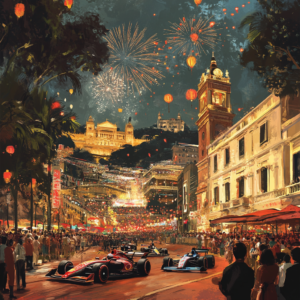
The following list gives a History Timeline of Macau. I’ll expand on it and add more photos, supporting material and links as the website as a whole develops.
Early Chinese History
221-206 BC – Qin Dynasty
- Governed by Nanhai Prefecture of the province of Guangdong.
265-420 BC – Jin Dynasty
- Became part of the Dongguan Prefecture.
- In the intervening years it changed hands between Nanhai and Dongguan prefectures.
960-1279 AD – Song Dynasty
- Moved under the jurisdiction of Xiangshan County.
- 1277 – 50,000 people sought refuge here from the invading Mongols, were able to defend themselves and settled.
1368 – 1644 AD – Ming Dynasty
- Fishermen migrated here from Guangdong and Fujian provinces.
- The A-Ma Temple was built for the fishermen to help keep them safe at sea.
- There were no major settlements here still at this time.
Portuguese Settlement
1511
- The Portuguese conquered Malacca, and the Malaccan Sultan lodged a complaint with the Chinese Emperor.
1516

- The Indian Viceroy Afonso de Albuquerque commissioned Rafael Perestrello — a cousin of Christopher Columbus to sail to China in order to open up trade relations. Rafael traded with the Chinese merchants in Canton in that year and in 1516, but was not allowed to move further.
1517
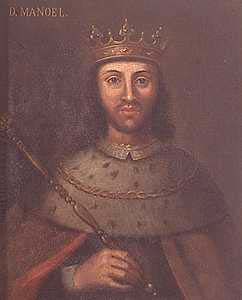
- Portugal’s king, Manuel I commissioned a diplomatic mission to Canton headed by Tomé Pires and Fernão Pires de Andrade.
- An embassy was established, but was rejected by the Chinese Ming court, which was less interested in foreign contacts, not least because of reports of the behaviour of Portugese elsewhere in China.
1520
- Pires reached Beijing and was arrested, and later dies in captivity.
1521/1522
- Several more Portuguese ships reached the trading island Tuen Mun off the coast of Canton, but were driven away by the Ming authorities.
1535
- Following a shipwreck, Portuguese traders were allowed to anchor ships in Macau’s harbours, and the right to carry out trading activities, though not the right to stay onshore.
- They later built some rudimentary stone-houses around the area now called Nam Van.
1540
- Relations improved when the Portuguese helped the Chinese to eliminate coastal pirates.
1549

- Annual trade missions to the offshore Shangchuan Island began.
- A few years later Lampacau Island, closer to the Pearl River Delta, became the main base of the Portuguese trade in the region.
1557
- The Ming court gave consent to a permanent Portuguese trade base at Macau.
- an annual rent of 500 taels (~20 kilograms (44 lb)) of silver.
- The Portuguese built a walled village there Ground rent payments began in 1573. China retained sovereignty and Chinese residents were subject to Chinese law, but the territory was under Portuguese administration. In 1582 a land lease was signed, and annual rent was paid to Xiangshan County.
- The Portuguese continued to pay an annual tribute up to 1863 in order to stay in Macau.
1558
- Leonal de Sousa became the 2nd Portuguese Governor of Macau.
1560s
- Jesuits and Dominicans Catholic Missionaries started arrived in Macau, who saw it as a gateway for converting the vast populations of China and Japan.
- Both orders soon set about constructing churches and schools, the most notable of which were the Jesuit Cathedral of Saint Paul and the St. Dominic’s Church built by the Dominicans. In 1576, Macau was established as an episcopal see by Pope Gregory XIII with Melchior Carneiro appointed as the first bishop.
1587
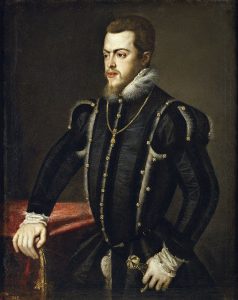
- With the union of Spanish and Portuguese crowns in 1580 King Philip II of Spain promoted Macau from “Settlement or Port of the Name of God” to “City of the Name of God” (Cidade do Nome de Deus de Macau).
- This union meant that Portuguese settlements also became targets for the Dutch, which was embroiled in a struggle for independence from Spain (the Eighty Years War).
1622
- The Dutch attacked Macau in the Battle of Macau with 800 men.
- They wanted to turn it into a Dutch possession.
- One of the first actions of Macau’s first governor, who arrived the following year, was to strengthen the city’s defences, which included the construction of the Guia Fortress.
The Golden Age
1640
- Portuguese and Chinese merchants flocked to Macau.
- However, Portuguese were never that numerous – only 1200 out of 26000 residents.
- Portugal’s trade along three major routes: Macau-Malacca-Goa-Lisbon, Guangzhou-Macau-Nagasaki and Macau-Manila-Mexico. The Guangzhou-Macau-Nagasaki route was particularly profitable because the Portuguese acted as middlemen, shipping Chinese silks to Japan and Japanese silver to China, pocketing huge markups in the process. This already lucrative trade became even more so when Chinese officials handed Macau’s Portuguese traders a monopoly by banning direct trade with Japan in 1547, due to piracy by Chinese and Japanese nationals.
Years of Decline
1637
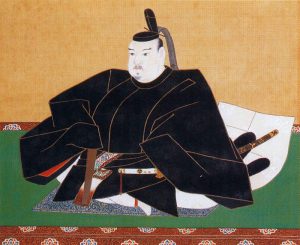
- Shogun sealed off Japan from foreign influence following increased activity by Spanish and Portuguese Catholic missionaries.
- Macau’s most profitable trade route (China – Japan) had been severed.
- (The Protestant Dutch were still allowed to trade from Deshima, a small man made island in Nagasaki).
1639
- Dutch seized Malacca – closing the trade route to Goa.
1642
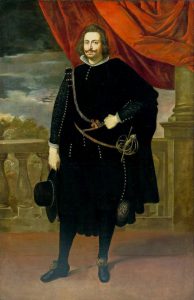
- The news that the Portuguese House of Braganza had regained control of the Crown from the Spanish Hapsburgs took two years to reach Macau, arriving in 1642. A ten-week celebration ensued, and despite its new-found poverty, Macau sent gifts to the new King João IV along with expressions of loyalty. In return, the King rewarded Macau with the addition of the words “There is none more Loyal” to its existing title. Macau was now “City of the Name of God in China, There is none more loyal” (“Não há outra mais Leal“).
- The full title awarded to Macau by King Joao IV is still displayed to this day inside the Leal Senado, though the building and emblem itself date from the 19th century.
1685
- The Emperor of China opened up trade with all foreign countries. Over the next few years England, Netherlands, France, Denmark, Sweden, US and Russia all encroached on Portugal’s position.
- Factories were established in Guangzhou and Macau.
1799
- British dominance in the 1790s was unsuccessfully challenged by a French/Spanish naval squadron at the Macau Incident on 27th January 1799.
1844
- Macau was recognised as an overseas province of Portugal (by Lisbon, if not by Beijing)
- Up until then it had been under the jurisdiction of one of Portugal’s Indian colonies (along with East Timor).
- The Treaty of Peace, Amity, and Commerce between China and the United States was signed at the Kun Iam Temple in Macau on 3 July.
- The temple was used by a Chinese judicial administrator, who also oversaw matters concerning foreigners, and was located in the village of Mong Há. The Templo de Kun Iam was the site where, on 3 July 1844, the treaty of Wangxia (named after the village of Mong Ha where the temple was located) was signed by representatives of the United States and China. This marked the official beginning of Sino-US relations..
The Hong Kong Effect
1842
- China ceded Hong Kong to the British, which started to take trade away from Macau (due in part to the deep water port of Victoria Harbour).
- Portugal declared Macau a free port to attempt to stem the decline of trade. They also expelled Chinese officials and soldiers and began taxing Chinese residents.
1848
1849
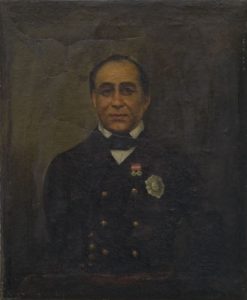
- Portugal abolished the Chinese customs house and declared Macau independent.
- China retaliated with the assassination of Gov. Ferreira do Amaral during the so-called Baishaling Incident.
- Portugal gained control of the island of Wanzai (Lapa by the Portuguese and now as Wanzaizhen), to the northwest of Macau and which now is under the jurisdiction of Zhuhai (Xiangzhou District).
1851
- Control over Taipa and Coloane, two islands south of Macau, was obtained between 1851 and 1864.
1883
- Macau and East Timor were again combined as an overseas province of Portugal under control of Goa in 1883.
1887
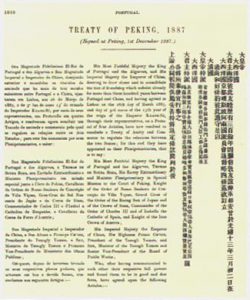
- Portugal relinquished control of the island of Wanzai.
- The Protocol Respecting the Relations Between the Two Countries (signed in Lisbon 26 March 1887) and the Beijing Treaty (signed in Beijing on 1 December 1887) confirmed “perpetual occupation and government” of Macau by Portugal (with Portugal’s promise “never to alienate Macau and dependencies without agreement with China” in the treaty). Taipa and Coloane were also ceded to Portugal, but the border with the mainland was not delimited.
1890
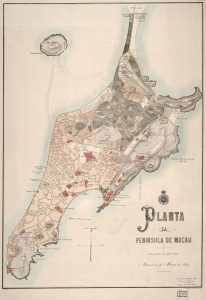
- Ilha Verde was incorporated into Macau’s territory in 1890, and, once a kilometre offshore, by 1923 it had been absorbed into peninsula Macau through land reclamation.
1892
- In 1871, the Hospital Kiang Wu was founded as a traditional Chinese medical hospital. It was in 1892 that Dr Sun Yat-Sen brought Western medicine services to the hospital.
World Wars
1942
- Unlike in the case of Portuguese Timor which was occupied by the Japanese in 1942 along with Dutch Timor, the Japanese respected Portuguese neutrality in Macau, but only up to a point.
- As such, Macau enjoyed a brief period of economic prosperity as the only neutral port in South China, after the Japanese had occupied Guangzhou (Canton) and Hong Kong.
1943
- In August 1943, Japanese troops seized the British steamer Sian in Macau and killed about 20 guards. The next month they demanded the installation of Japanese “advisors” under the alternative of military occupation.
- The result was that a virtual Japanese protectorate was created over Macau.
1945
- When it was discovered that neutral Macau was planning to sell aviation fuel to Japan, aircraft from the USS Enterprise bombed and strafed the hangar of the Naval Aviation Centre on 16 January 1945 to destroy the fuel. American air raids on targets in Macau were also made on 25 February and 11 June 1945. Following Portuguese government protest, in 1950 the United States paid US$20,255,952 to the government of Portugal.
- Japanese domination ended in August 1945.
Communist China
1949
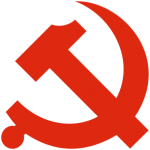
- Chinese communists came to power.
- Declared the Protocol of Lisbon to be invalid as an “unequal treaty” imposed by foreigners on China. However, Beijing was not ready to settle the treaty question, leaving the maintenance of “the status quo” until a more appropriate time. Beijing took a similar position on treaties relating to the Hong Kong territories of the United Kingdom.
1951
- In 1951, the Salazar regime declared Macau, as well as other Portuguese colonies, an “Overseas Province” of Portugal.
1952
- During the 1950s and 1960s Macao’s border crossing to China Portas do Cerco was also referred to as Far Eastern Checkpoint Charlie with a major border incident happening in 1952 with Portuguese African Troops exchanging fire with Chinese Communist border guards.
- According to reports, the exchange lasted for nearly two hours leaving one dead and several dozens injured on Macau side and more than 100 casualties claimed on the Communist Chinese side.
1954
- In 1954, the Macau Grand Prix was established, first as a treasure hunt throughout the city and in later years as formal car racing even.
1962
- In 1962, the gambling industry of Macau saw a major breakthrough when the government granted the Sociedade de Turismo e Diversões de Macau (STDM), a syndicate jointly formed by Hong Kong and Macau businessmen, the monopoly rights to all forms of gambling. The STDM introduced western-style games and modernised the marine transport between Macau and Hong Kong, bringing millions of gamblers from Hong Kong every year
1966
- Riots broke out in 1966 during communist Cultural Revolution, when local Chinese and the Macau authority clashed, the most serious one being the so-called 12-3 incident. It was sparked by the overreaction of some Portuguese officials to what was a regular minor dispute concerning building permits. The riots caused 8 deaths and the end was a total climbdown by the Portuguese Government.
1967
- On January 29, 1967, the Portuguese Governor, José Manuel de Sousa e Faro Nobre de Carvalho, signed a statement of apology at the Chinese Chamber of Commerce, under a portrait of Mao Zedong, with Ho Yin, the Chamber’s President, presiding.
- Two agreements were signed, one with Macau’s Chinese community, and the other with mainland China. The latter committed the Government to compensate local Chinese community leaders with as much as 2 million Macau Patacas and to prohibit all Kuomintang activities in Macau. This move ended the conflict, and relations between the government and the leftist organisations remained largely peaceful.
- This success in Macau encouraged leftists in Hong Kong to “do the same”, leading to riots by leftists in Hong Kong in 1967. A Portuguese proposal to return the province to China was declined by China.
- Also in 1966, the Church of our Lady of Sorrows on Coloane opened up.
1968
- In 1968, the Taipa-Coloane Causeway linking Taipa island and Coloane island was opened up.
1974
- In 1974, following the anti-colonialist Carnation Revolution, Portugal relinquished all claims over Macau and proposed to return Macau over to Chinese sovereignty.
1979
- Portugal and the People’s Republic of China established diplomatic relations on 8 February 1979, and Beijing acknowledged Macau as “Chinese territory under Portuguese administration.”
1980
- A year later, Gen. Melo Egidio became the first governor of Macau to pay an official visit to Beijing.
- The visit underscored both parties’ interest in finding a mutually agreeable solution to Macau’s status.
1986
- A joint communiqué signed 20 May 1986 called for negotiations on the Macau question, and four rounds of talks followed between 30 June 1986 and 26 March 1987. The Joint Declaration on the Question of Macau was signed in Beijing on 13 April 1987, setting the stage for the return of Macau to full Chinese sovereignty as a Special Administrative Region on 20 December 1999.
1994
- In 1994, the Bridge of Friendship was completed, the second bridge connecting Macau and Taipa.
1995
- In November 1995, the Macau International Airport got inaugurated. Before then the territory only had 2 temporary airports for small aeroplanes, in addition to several permanent heliports.
1997
- In 1997, the Macau Stadium was completed in Taipa.
Handover to China
1999
- Return of Macau to full Chinese sovereignty as a Special Administrative Region.
- The PRC has promised that, under its “one country, two systems” formula, China’s socialist economic system will not be practised in Macau and that Macau will enjoy a high degree of autonomy in all matters except foreign and defence affairs until at least 2049, fifty years after the handover.
- Thus the history of European colonisation of Asia ended where it began. Although offered control of Macau in the 1970s, the Chinese deemed the time “not yet ripe” and preferred to wait until December 1999—the very end of the millennium, two years after the Hong Kong handover—to close this chapter of history.
Recent History
2002
- The Macau government ended the gambling monopoly system and 3 (later 6) casino operating concessions were granted to Sociedade de Jogos de Macau (SJM, an 80% owned subsidiary of STDM), Wynn Resorts, Las Vegas Sands, Galaxy Entertainment Group, the partnership of MGM Mirage and Pansy Ho Chiu-king, and the partnership of Melco and PBL, thus marking the begin of the rise of Macau as the new gambling hub in Asia.
- As one of the measures to develop the gambling industry, the Cotai strip was completed after the handover to China with construction of the hotel and casino industry starting in 2004.
2004
- The Sai Van Bridge is completed, the third bridge between Macau island and Taipa island.
2005
- In 2005, the Macau East Asian Games Dome, the principal venue for the 4th East Asian Games, is inaugurated.
2007
- In 2007, the first of many resorts opened, The Venetian Macao. Many other resorts followed, both in Cotai and on Macau island, providing for a major tax income stream to Macau government and a drop in overall unemployment over the years down to a mere 2% in 2013.
2007
- Similar to other economies in the world, the financial crisis of 2007–08 hit Macau leading to a stall in construction of major construction works (Sands Cotai Central) and a spike in unemployment.
2009
- With residential and development space being sparse, Macau government officially announced on 27 June 2009 that the University of Macau will build its new campus on Hengqin island, in a stretch directly facing the Cotai area, south of the current border post. Along with this development, several other residential and business development projects on Hengqin are in the planning.
2011
- In 2011 to 2013 further major construction on several planned mega-resorts on the Cotai Strip commenced.
2014
- 2014 marked the first time that the gambling revenues in Macau declined on a year-to-year basis. Starting in June 2014, gambling revenues declined for the second half of the year on a month-to-month basis (compared with 2013) causing the Macau Daily Times to announce that the “Decade of gambling expansion end(ed)“. This lead the Macau government attempt to reconstruct the economy, to depend less on gambling revenues. Some reasons for the slowdown are China’s anti-corruption drive reaching Macau and China’s economy slowing down.

